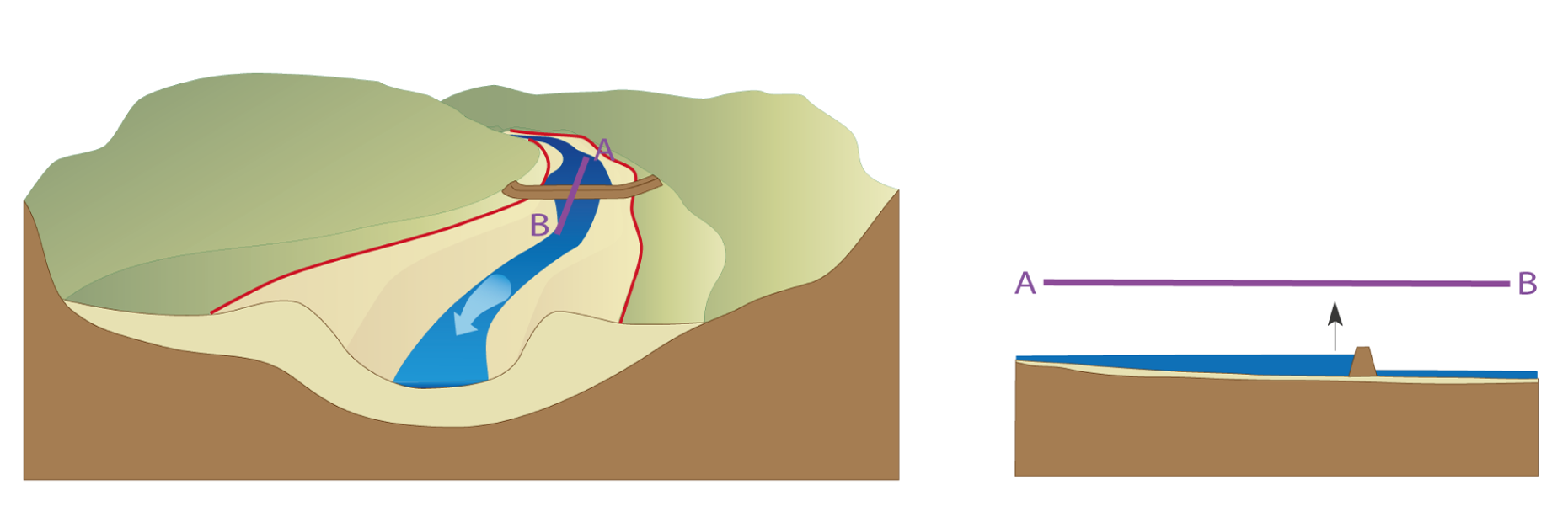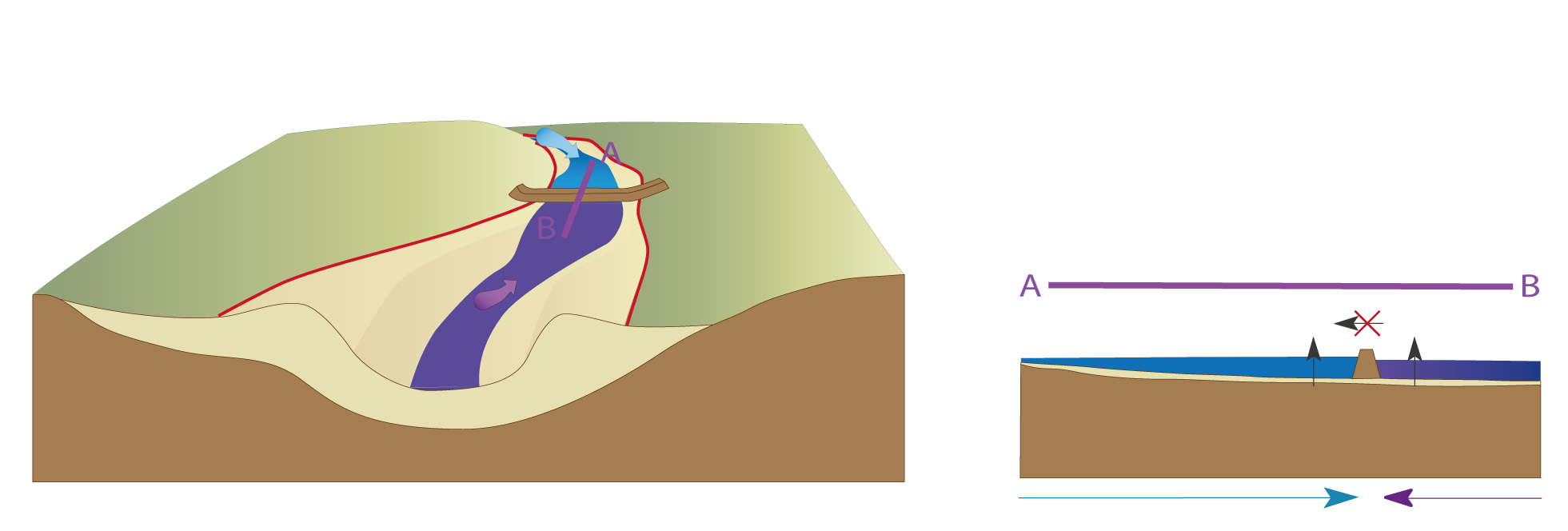|
|
BundingA bund is an embankment or dyke. Bunding refers to the construction of a thick wall including an embankment (a thick wall of earth), dyke (a thick wall), dam (a wall), levee (a raised bank), or weir (a low barrier), etc. that may restrict water flow over the ground and/or raise water levels. Bunds are often either earthen, rock, or concrete in material. Quick links
Bunding – Bund in a channelSelect from the tabs below A bund observable in a channel generally orientated perpendicular to the course of the channel often raises or stabilises water levels immediately upstream of the bund by holding back water in the channel. The bund may result in the extension of water beyond existing channel boundaries. Bund in a riverine channel - no change to wetland systemBunds in a riverine channel generally orientated perpendicular to the course of the channel may raise or stabilise water levels immediately upstream of the bund by holding back water in the channel. In situations with smaller bunds where the water levels immediately upstream of the bund do not exceed two metres in depth or extend over eight hectares in size, the wetland upstream of the bund remains a riverine wetland system. However, the permanency of the water upstream of the bund and other wetland hydrological characteristics may change. Applicable Wetland Habitat Hydrological Modification:
Bund in a riverine channel - change to wetland systemBunds in a riverine channel generally orientated perpendicular to the course of the channel may raise or stabilise water levels immediately upstream of the bund by holding back water in the channel. In situations with larger bunds where the water levels immediately upstream of the bund exceed two metres in depth or extend over eight hectares in size, the wetland immediately upstream of the bund changes to a lacustrine wetland system. There is no change to the wetland system downstream of the bund. The permanency of the water upstream of the bund and other wetland hydrological characteristics may change. Applicable Wetland Habitat Hydrological Modification:
Bund in an intertidal channelBunds in an intertidal channel generally orientated perpendicular to the course of the channel may restrict the landward movement of tidal water in the channel. The wetland immediately upstream of the bund changes to a palustrine or lacustrine wetland system. The wetland downstream of the bund will remain an intertidal wetland system. Applicable Wetland Habitat Hydrological Modification:
Last updated: 7 June 2023 This page should be cited as: Department of Environment, Science and Innovation, Queensland (2023) Bunding – Bund in a channel, WetlandInfo website, accessed 8 May 2025. Available at: https://wetlandinfo.des.qld.gov.au/wetlands/ecology/processes-systems/anthropogenic/hydro-concept-mod/bunding/in-channel.html |

 — Department of the Environment, Tourism, Science and Innovation
— Department of the Environment, Tourism, Science and Innovation




